Exotic Bully: Everything You Need To Know About The Exotics


The breed of exotic bully is a recent dog breed in the world of dogs since it only originated in 2008. Among dog lovers, the short-legged, strong dog breed became popular overnight.
If you are aware of the great American Bully, then these exotic bullies are a distant relative of this American bully. If you want to know more about the exotic bully, then here are a few initial details about the exotic bully.
Breed Overview
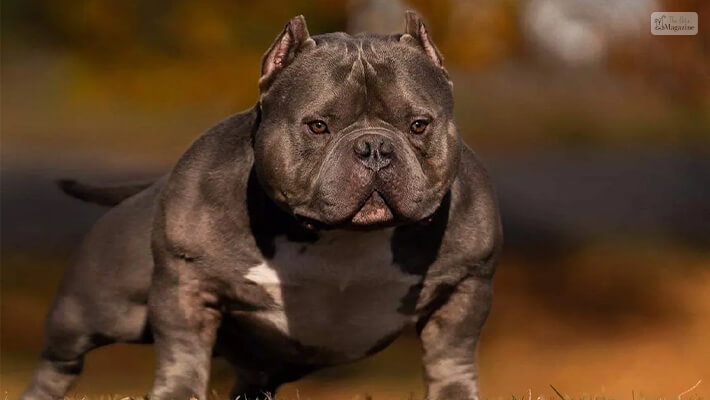
Before we dig deeper into the newer exotic bully, but before we get on with it, here are a few details that we should know.
| Real Name | Exotic Bully |
| Other Names | Exotics |
| Origin | Unknown |
| Breed Type | Crossbreed |
| Lifespan | 5-15 years |
| Weight | 24 – 35 kg (55 to 75 pounds) |
| Height | 14 – 16 inches |
| Color | Brown, white chestnut, and brown |
| Coat | Short coat |
History of Exotic Bully
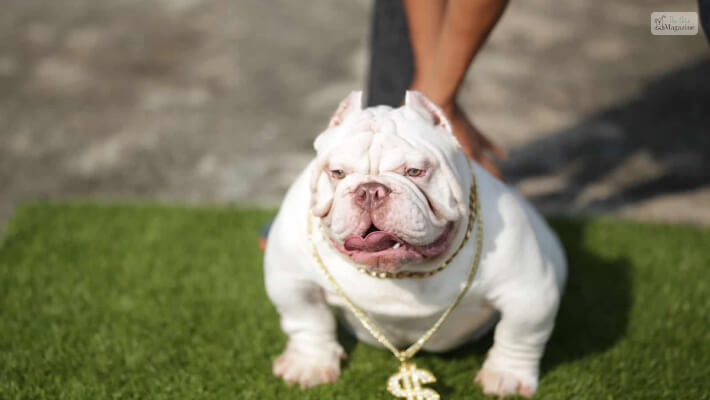
The Exotic Bullies originate from the American Bully, but they do not share the same ancestry. Breeders have tried a lot to make this breed smaller than the standard American Bully.
To get this, Exotic Bully breeders tried breeding small pocket bullies with other bulldogs, and this includes shorty bull and French bulldog. This has reduced their size a lot, but made them look a lot like bulldogs.
Despite their sweet temperament and adorable looks, the exotic bully breeders are scrutinized a lot because of unethical breeding practices. These dogs come with a lot of health issues that they get from their ancestors, which affect future generations.
The Exotic Bully lifespan is reduced by these health issues, which also lowers its quality of life. Also, the American Bully Kennel Club does not associate them with this breed because they do not carry the same standard as American Bullies, and because of their health problems.
Understanding the Exotic Bully
Although the exotic breed is quite recent and a relatively newer dog breed, the tracking and records of the breed development. But when it comes to an understanding of this exotic dog breed, not much is known about the breed.
We all know that the exotic bully dog breed is a cross between a few Bully breeds, like the Olde English Bulldog, American Bully, Shorty Bull, English Bulldog, and French Bulldog.
Appearance
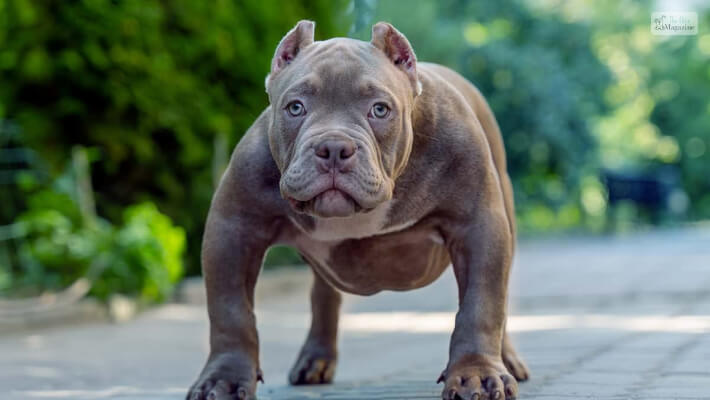
The Exotic bully is a newer dog breed but has no official recognition. The bully is exotic and has a lot of similar attributes as other Bull breeds, such as Pitbull, Bulldog, American Bully, and any other Bully dog breeds.
These exotic bullies’ bodies are short and stout, with quite broad and heavy-boned bodies. The dog possesses immense strength and portrays confidence.
The dog shows intimidating behavior when interacting. The breed’s forelegs are short, giving the impression of a dwarf appearance. The tail is quite strong, but it’s not thin or whippy.
Personality
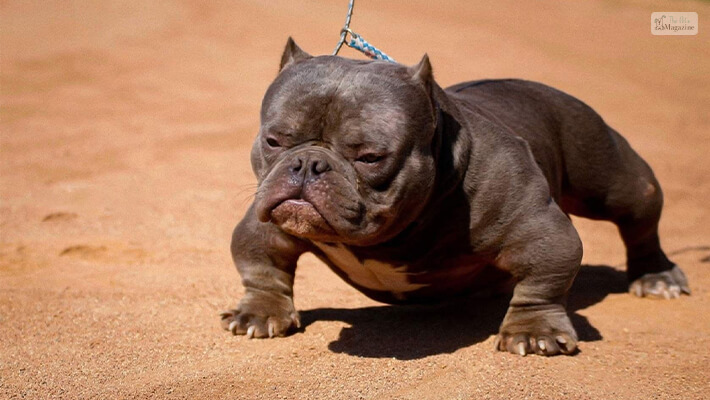
The exotic bully might give out a more intimidating look and also give out an uncomfortable sensation in humans. This is only when you are not aware of the whole breed of the dog.
Exotic bully breeds are not at all aggressive to any humans or dogs, they are quite friendly, but it is important to train your dog and have a good understanding with the owner.
Although the dog has many bulldog traits, the dog hasn’t inherited any of the aggressive traits like the other dogs. They are great with other dogs and are very social in nature, but they do show certain jealous nature, which is quite common among dogs.
This dog breed shows a strong relationship with its owners and even fights for its owner’s attention. “Cuddle time” is very important for this exotic bully.
What is an Exotic Bully’s Temperament?
Though they might seem intimidating and terrifying, Exotic Bullies are known to be quite laid-back, docile and gentle in nature.
These dogs act more like a bulldog than the American Bully. These bullies are not territorial, rather quite outgoing and are friendly with everyone.
1. Are Exotic Bullies Good with Kids?
Yes, Exotic Bullies are great with children.
Their loving, playful nature and loyal attitude make them an ideal companion for children-owning families. They’re a guard-like and gentle breed that generally becomes extremely attached to the younger members of the family. Their low-to-moderate energy level also ensures that they’re not too hyperactive around children, lowering the chances of accidental bumps and injuries.
Tips for families:
- Always closely monitor play between dogs and very young children.
- Educate children on how to respect pets not to cause stress in the dog.
2. Are Exotic Bullies Good with Other Animals?
Exotic Bullies are good with other pets, especially when well socialized early.
Early socialization is the strongest influence on the attitude of a dog towards other animals. Exotic Bullies will learn to live together if socialized, but due to their pushy, dominant nature, they will show dominance or territorial behavior to new animals.
Training recommendations:
- Socialize early (ideal at puppy stage).
- Socialize often in varied settings and around animals.
- Reward friendly and calm behavior using positive reinforcement.
3. Are Exotic Bullies Aggressive?
No, Exotic Bullies aren’t naturally aggressive.
Despite how they look, the dogs themselves are friendly, loyal, and eager to please. Exotic Bullies’ aggression is more often a result of poor breeding, improper training, or abuse, not temperament.
Responsible breeders do try to create dogs stable and loving in temperament, with bad behavior being at a minimum. However, as with any other breed, environment and training are required.
Warning signs to look out for:
- Snapping or growling at people when getting close to mealtime.
- Barking or lunging at strangers because of their territory.
- Overprotectiveness towards family members.
If any of these behaviors are evident, speak with an experienced dog behaviorist or trainer.
4. Do Exotic Bullies Bark?
Exotic Bullies do not bark excessively, so they are ideal for apartment residence or noise-restriction communities.
They primarily bark when necessary—i.e., to alarm their masters about someone at the door or suspicious movement in and around the house. Their relaxed personality makes them relatively less noisy compared to most other small and medium-sized dogs.
What might lead to barking:
- Boredom or insufficient mental stimulation.
- Separation anxiety for extended periods.
- Inadequate socialization to lead to fear reactions.
Mental stimulation, interactive toys, and organized schedules can curtail excessive barking.
5. Are Exotic Bullies Intelligent?
Yes, Exotic Bullies are smart and smart dogs.
They are able to learn commands and habits pretty quickly, particularly when training involves positive reinforcement methods such as treats, praise, and playtime. Although they are not ranked as one of the top working dog geniuses like Border Collies and Poodles, they are clever enough to learn household regulations, basic commands, and even advanced tricks.
But they can be stubborn at times, particularly when they feel there is inconsistency in direction or training.
Training tips:
- Keep training sessions brief and enjoyable to maintain their interest.
- Be patient and consistent.
- Harsh corrections should be avoided—natural praise works better with them.
6. Are Exotic Bullies Energetic?
Exotic Bullies possess a moderate energy level and are simple to accommodate different lifestyles.
They love playtime, walks, and gentle exercise but don’t need too much physical exercise. A 30-minute walk and a bit of indoor play are usually sufficient to maintain their health and happiness.
Because they have a short snout and compact, small body, they are not well suited to heavy work or long-distance running. They get hot or joint issues if over-worked.
Exercise tips:
- 30–45 minutes of exercise daily.
- Avoid playing outside on hot, humid days.
- Add mental challenge toys such as puzzle toys.
7. Are Exotic Bullies Easy to Train?
Exotic Bullies are simple to train, provided owners assume control early and train with reward techniques.
They love consistency and pleasing their people. But inconsistency or extremely dominating training styles will cause resistance or confusion.
Training basics:
- Begin with crate training and housebreaking at an early stage.
- Teach basic obedience commands (sit, stay, come) by 4–6 months.
- Reward desired behavior with high-value rewards.
Training is not all about control—it is also a bonding experience that builds trust between owner and dog.
8. Are Exotic Bullies Good Watchdogs?
Yes, Exotic Bullies make good watchdogs due to their watchfulness and protective nature.
Though not hostile, they are wary of strangers and will notify their owners of their approach by barking or warning gestures. Their muscular build and assertive attitude also serve as a warning to intruders from the outside.
Watchdog features:
- Defensive and not excessively hostile.
- Loyal and apt to respond to the cues of their owners.
- Quiet by comparison unless they have cause to bark.
But they are not typically suited to be guard dogs since their friendly temperament will dominate any tendency towards aggression.
Grooming
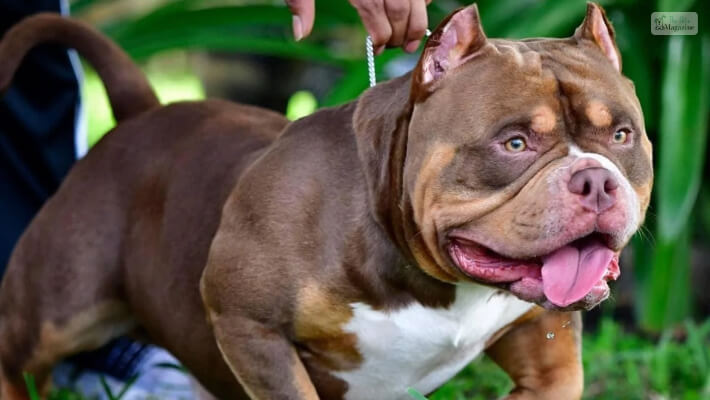
The exotic bully has a smooth and short coat, so it doesn’t require much grooming. However, they tend to shed fur a bit, less than any of the other bully breeds. But there are ways you can reduce the shedding amounts.
The best thing about this dog breed is that their hair doesn’t get tangled, which is why they don’t require much brushing. Bathing them a couple of times a month, only if they get dirty while playing in the dirt.
Since their hair is short, they don’t need any haircut or trimming. If you shave their fur once in a while, it can help to minimize the shaving. It is very important that you take your exotic bully to regular vet checkups to keep up with its nutrition.
Food & Diet
The exotic bully has no such special diet; the best diet for both the exotic bully puppy and the adult exotic bully is lots of protein and low-fat food. But it is better that you consult your vet regarding the food diet and when to feed them.
These exotic bully dogs are quite sensitive and are also quite unhealthy, so they need a healthy diet with physical exercise.
Training
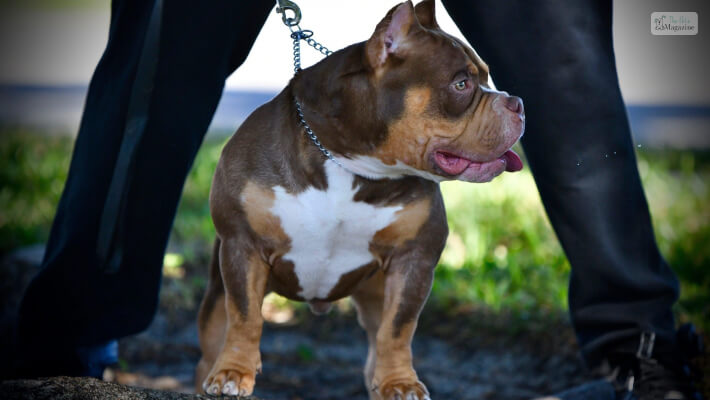
Once you get to adopt an exotic bully, you should know that these exotic bully needs to be trained, as, without training, they can be a bit aggressive or show certain bad behavior. This is why you need to invest time in their training and socialization.
The training should start ever since the moment you bring your pet home, or you might receive complaints from your neighbors.
Training tips:-
- Use dog treats, food, and a lot of positive reinforcement
- Be consistent
- The training should be short and should be limited
Health Issues
Exotic bully are known to contract ear yeast infections, which is why occasional ear cleaning is important. It is also important to maintain clean and healthy teeth for these dogs. Since they are a new breed, they often show both the good and bad effects of the parent breeds.
There are a number of health problems that affect this breed, and due to the Exotic Bully health issues, their life span is often short. These health issues are myriad and include chondrodysplasia.
Also, a few of the health problems that the exotic bully goes through are,
- Joint problems
- Back problems
- Overheating
- Short Life
- Brachycephalic
- Hip Dysplasia
Exotic Bully Vs American Bully

Choosing to get a Bully is not an easy task. You need to know what you are doing and how to deal with them. You should know the differences between the different breeds to give them the best possible life.
Here are some of the major differences between an American Bully and an Exotic Bully.
| Feature | American Bully | Exotic Bully |
|---|---|---|
| Size | American Bullies are around 20 inches tall and weigh around 40 to 130 pounds. | Most exotic bullies are under 16.5 inches and weigh around 30 to 50 pounds. |
| Activity level | They are very active and energetic, and need a lot more exercise than exotic bullies. | Exotic bullies are energetic and need a lot of exercise. |
| Training | They are highly trainable and need reward-based training. | They do well with clicker training and ofcourse, a positive reinforcement goes a long way. |
| Health issues | They have many allergies to their food. | They are prone to weight gain and need regular exercise to stay fit. |
| Social skills | They are perfect for families and get along with other pets and kids. | They are good family dogs and get along with kids. |
| Price & popularity | American Bullies are more accessible, and you can get one with a considerable investment. | Getting Exotic Bullies with some specific traits can be quite expensive. |
Is This Breed Suitable For You?
If you are a fan of mixed or even cross-breed dogs, then this is the best dog breed for you. Exotic bully dogs are not big dogs, so they don’t need large spaces, and since they don’t shed much, they are low maintenance.
These exotic bullies are easily trainable, and once they are trained, they are very friendly and cuddly dogs. They are not at all aggressive, as they are sometimes advertised to be, like other Bulldog breeds.
Frequently Asked Questions
Here are some of the most common questions people ask about the Exotic Bully breed.
Exotic bullies have some special physical characteristics compared to other American Bully dogs. They have a muscular physique with bowed elbows, giving them a compact appearance. Their facial features differentiate them from others.
This is a new breed that developed around 2008. Their genetic framework starts with the American Bully breed with some features from Shorty Bull, French Bulldog, English Bulldog, and many more.
The price of an Exotic Bully ranges from $1,500 to $3,000. The price range goes a lot more in case of some standard puppies. It can go up to $50,000 or $1,000,000 if you choose some specific sought-after bloodline and champion dogs.
Exotic bullies are available in various colors like fawn, blue, and black. Moreover, they are available in some rare colors like lilac, merle patterns, and tri-color.
Some of the common health problems that affect Exotic Bullies are skin diseases, cataracts, congenital heart disease, hip dysplasia, hypothyroidism, and allergies.




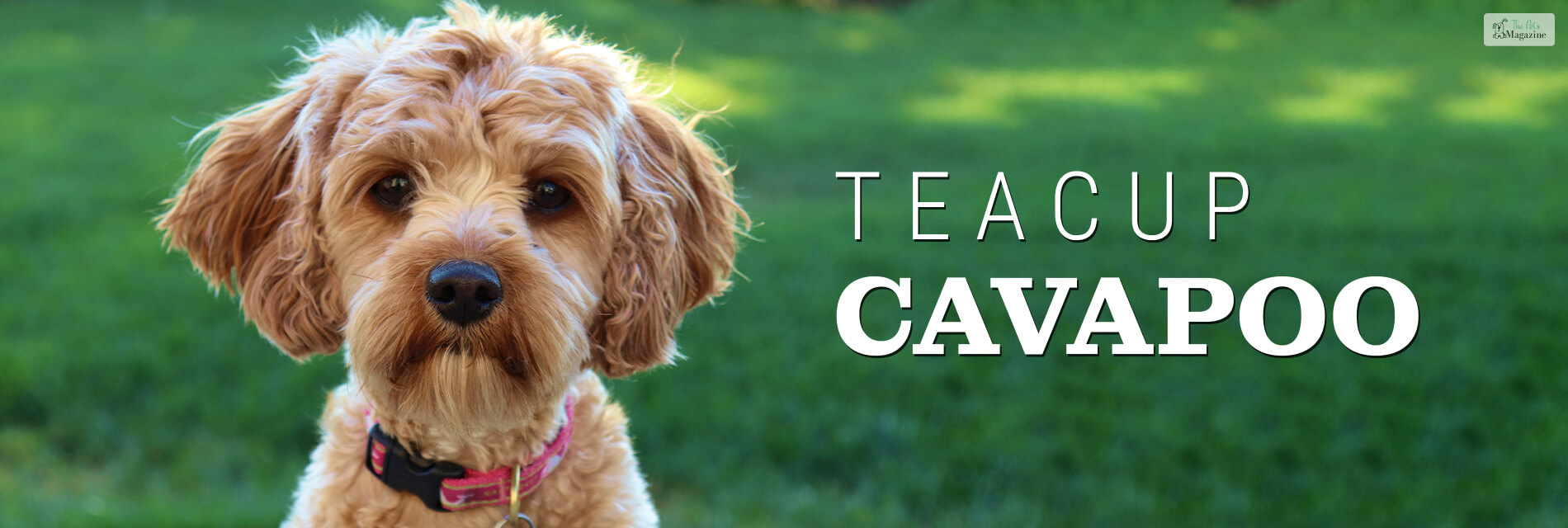




All Comments
10 December, 2023
Thank you very much for sharing, I learned a lot from your article. Very cool. Thanks
Reply